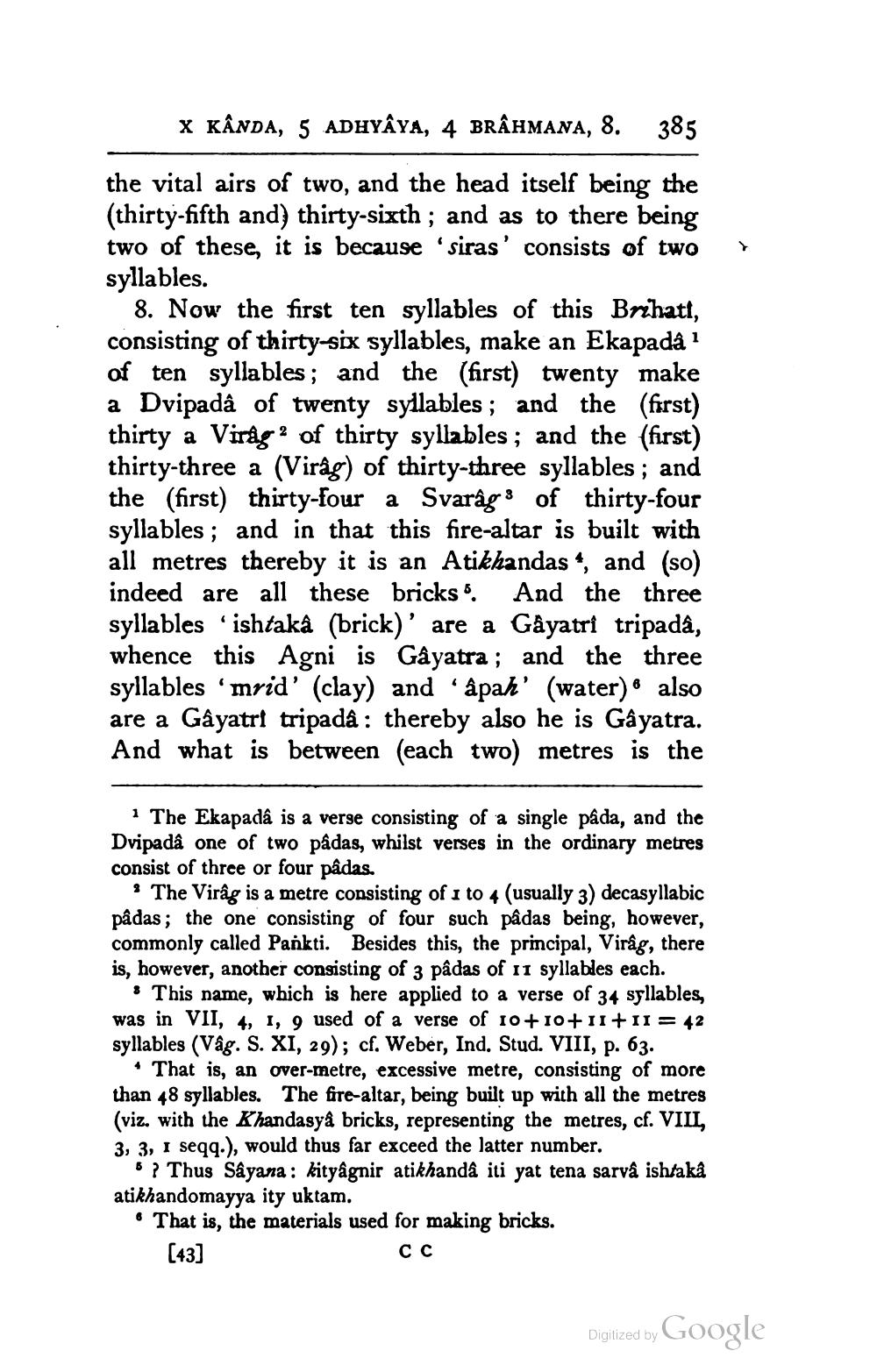________________
X KÂNDA, 5 ADHYAYA, 4 BRÂHMANA, 8.
385
the vital airs of two, and the head itself being the (thirty-fifth and) thirty-sixth ; and as to there being two of these, it is because 'siras' consists of two syllables.
8. Now the first ten syllables of this Brihatt, consisting of thirty-six syllables, make an Ekapadá of ten syllables; and the (first) twenty make a Dvipadâ of twenty syllables ; and the (first) thirty a Virág? of thirty syllables; and the (first) thirty-three a (Virág) of thirty-three syllables ; and the (first) thirty-four a Svarâgs of thirty-four syllables ; and in that this fire-altar is built with all metres thereby it is an Atikhandas", and (so) indeed are all these bricks. And the three syllables ‘ishtaka (brick)' are a Gayatri tripadá, whence this Agni is Gâyatra ; and the three syllables 'mrid' (clay) and `âpah' (water) & also are a Gayatri tripadâ: thereby also he is Gayatra. And what is between (each two) metres is the
1 The Ekapada is a verse consisting of a single pâda, and the Dvipada one of two padas, whilst verses in the ordinary metres consist of three or four pâdas.
* The Virág is a metre consisting of 1 to 4 (usually 3) decasyllabic pâdas; the one consisting of four such pâdas being, however, commonly called Pankti. Besides this, the principal, Virág, there is, however, another consisting of 3 pâdas of 11 syllables each.
: This name, which is here applied to a verse of 34 syllables, was in VII, 4, 1, 9 used of a verse of 10+10+11+11 = 42 syllables (Våg. S. XI, 29); cf. Weber, Ind. Stud. VIII, p. 63.
• That is, an over-metre, excessive metre, consisting of more than 48 syllables. The fire-altar, being built up with all the metres (viz. with the Khandasyå bricks, representing the metres, cf. VIII, 3, 3, I seqq.), would thus far exceed the latter number.
? Thus Sâyana : kityâgnir atikhanda iti yat tena sarvâ ishtaka atikhandomayya ity uktam. . That is, the materials used for making bricks. [43]
CC
Digilized by Google




